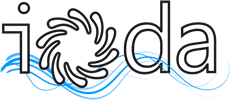Programming in ParaView
Lyons 6-7 September 2016
Kitware SAS
26 rue Louis Guérin
69100 Villeurbanne
France
Tel: +33 (0)4 37 45 04 15
The training took place on September 6 & 7 2016 at Kitware Europe Offices hosted by Julien Jomier
INSTRUCTOR
The training was given by Mathieu Westphal and Tristan Coulange
Mathieu Westphal joined Kitware's European team in Lyon as an R&D engineer in April 2015. Mathieu received his engineering degree from INSA Lyon, and extended
his expertise with a Master in fundamental computer science at ENS Lyon in 2010. Prior to joining Kitware, Mathieu worked on different projects focusing on adaptive
optics, recasting in large data-sets, visualization pipelines using C++, C/Python, Malab VTK/Qt/ParaView.
His proficiency covers C,C++, Python, OpenGL, GLSL, VTK, ParaView, Cublas, CMake/CDash/CTest and allows him to work on different projects at Kitware.
Email: mathieu.westphal@kitware.com
Tristan Coulange joined the Kitware European team as a R&D engineer in October 2013.
After qualifying as an informatics and research engineer in Centrale Lille (France) in 2012, Tristan decided to extend his scope of expertise and joined the Informatics
Master in Lyon University to specialize in image treatment and algorithmic geometry. Passionate about mathematics, programming, technology, and research, Tristan
teamed up with R&D experts during his different internships to work on radiotherapy applications, image segmentation, real-time shape recognition, and GPU parallel
computing.
Email: tristan.coulange@kitware.com
PREREQUISITES
The various topics covered in this course required VTK: a basic knowledge.
Training Feedback
The Programming in ParaViewtraining took place on 6-7 September 2016 and it was held at the Kitware Europe Offices in Lyon, France. The training was given by the expert in computer science, Mathieu Westphal and it provided the ESRs with useful information from how to visualize and process data using ParaView to how to program in ParaView and create plugins. Overall, it was an interesting and interactive training which mixed theory and application with a set of tutorials and exercises.
Learning how to use ParaView properly in order to visualize and manipulate data was very important for the ESRs, since most of them use this tool in their daily processes. Moreover, the information provided on how to use the already available ParaView plugins and how to program new ones was really helpful for the ESRs to understand how they could create a common platform (API) for exchanging data between their different workflows.
Ilias

